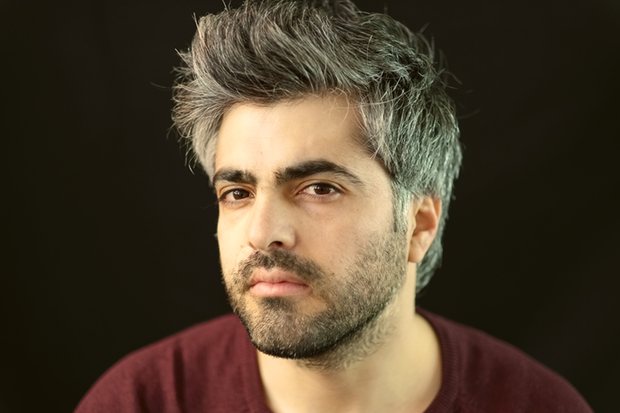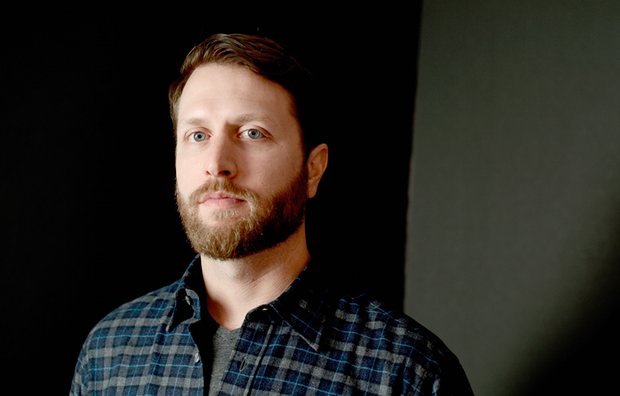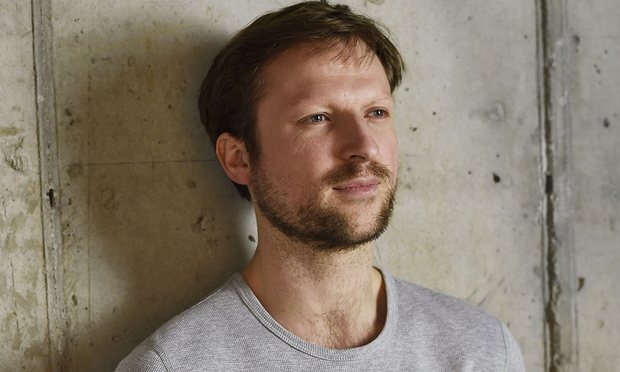(The Guardian)- Wars are defined by the way they are covered. In the 1930s, it was the Leica that brought the Spanish civil war to readers, while the second world war was seen through black-and-white newsreels. After the colour TV footage of Vietnam, which introduced war to every living room, audiences experienced the illusion of real-time participation in the Balkans and the wars against Saddam Hussein via 24-hour news cycles and instant video. More recently the use of lightweight cameras has blurred the line between fighters and embedded film-makers, as Armadillo and Restrepo, two documentaries from 2010 about the war in Afghanistan, showed. But today’s Syrian wars have brought a new level of brutal intimacy to the coverage of conflict. Smartphones allow the most intimate images of death to be smuggled out. While Isis posts videos of beheadings, their opponents are making use of their own imagery, in the quest to secure global attention for their beleaguered cause.
News stories are the brief chronicles of contemporary death and destruction. Documentaries, which require more engagement, allow us to comprehend why people are fighting each other. They also define the character of war, giving an insight into the chaos of combat. News is inadequate at showing the suffering of victims. It cannot linger on shattered lives.
There has always been a dilemma for those seeking to make sense of war through the medium of documentary film. You can expose audiences to too much carnage, alienating them. It’s also never clear whether acquaintance with horror does much to change minds. Toning down the images of conflict, however, results in the banalisation of bloodshed, making it into an easily consumed spectacle. At the Sundance film festival last month, where three big films about Syria were shown, attitudes to the graphic images varied. I met many who were shocked by the films to the point of antagonism. I’ve come to identify with the minority who believe that as little as possible should be left out of the depiction of atrocity. In the low-level war between good taste and reality, we should side with the latter. It’s always better to know than not to know. The best documentaries tell us what we should really know, and why we should know it.
Nonetheless, films are narratives, and these must be carved out of raw footage. Cries from Syria, which is the work of Evgeny Afineevsky, soon to be shown on HBO, shockingly assembles the worst images from Syria. A more nuanced approach is taken by Matthew Heineman in City of Ghosts. Heineman made the astonishing Oscar-nominated Cartel Land, depicting the Mexican drug wars, and in his new film focuses on the citizen journalists of Raqqa Is Being Slaughtered Silently (RBSS), who risked their lives to bring out images of their city stricken by the Isis occupation. Heineman’s skilfully unobtrusive style of narrative meshes with the anonymity of his subjects, allowing them prominence as they hide from their tormentors. City of Ghosts is a powerful reminder of how hard it is, literally, to report the truth, let alone convince people of how bad things are.
Orlando von Einsiedel’s graceful 40-minute film The White Helmets, released on Netflix last year, tracks the efforts of a group of volunteer rescue workers trying to save lives in the wake of Russian and Syrian bombing raids. It has been justly nominated in this year’s Oscar short category.
Last Men in Aleppo, which also debuted at Sundance, taking the grand jury award for world documentary, again focuses on the White Helmets, but is altogether a bigger film. Culled from hundreds of hours of locally shot footage, Feras Fayyad’s masterpiece tells the story of the four-year Aleppo siege through the volunteers who, raid after raid, pulled bodies from the wreckage. There are many appalling scenes, but these are adeptly shaped by Danish co-director and editor Steen Johannessen into aesthetic coherence. One can sit through these brutally long takes to have some idea of what it must feel like to be pounded into submission each day, and refuse to surrender. The sense of solidarity among its heroes, Khaled, Mahmoud and Subhi, is never sentimentalised as they pull out body parts, hiding from the survivors the cruel reality that their loved ones died in the rubble, trying to spare the rescued some anguish as they are taken to hospital. “All dignity is dead,” observes the young Mahmoud, crying out at the lack of support from Arab states and the west. Surely he’s right. “Some people prefer to die than to live in refugee camps,” Ahmed says, “but Aleppo is my city.” Shortly afterwards he, too, is buried under Aleppo rubble and dies.
These momentous Syrian films are made more painful by the failure of the west to do much in Aleppo, or indeed in the war against Isis. One can watch them as audiences must have reacted to films of the stricken Spanish Republic in 1930s, or indeed American audiences witnessed wrenching depictions of the 1940 London blitz.
“What do you want us to do?” asked a bemused and shocked member of the audience after the premiere of Last Men in Aleppo. I didn’t think this was a dumb question. What we choose to do won’t, it would seem, depend on our governments, for the most part inclined to do nothing in the face of conflict-averse public opinion. But there remain things that we can do, and ruthlessly, stubbornly brave films show us what these might be. Or, if that is too complicated, they can simply depict the ways in which human beings endure conflict, or are ennobled by it.
Feras Fayyad, Last Men in Aleppo: ‘Every sadness was like a turning point, for us to continue’

Now based in Copenhagen, Syrian-born Feras Fayyad is an award-winning filmmaker, journalist and radio producer. His latest documentary, Last Men in Aleppo, won the grand jury prize in the international competition at Sundance last month by a unanimous jury vote. Co-directed with Steen Johannessen and shot in high-risk conditions in the decimated Syrian capital between 2015 and 2016, it’s a study of the rescue work done by the White Helmet volunteers of the Syrian Civil Defence Force, focusing principally on Khaled Harrah, who has since been killed in action
I studied art and film-making in Paris, but after three years of working in television drama, I hated the connection with a fake life – I needed to do something connected with reality, with real people. I started searching for stories and doing documentaries but it was very difficult in a country under a dictatorship; you have to tell your story in much more symbolic layers.
Then came the revolutionary period in 2011, when citizen journalists started using their mobile phones to document everything around them, telling their stories in a simple, more direct way. At that time, I was arrested and forced to leave Syria for Jordan, then Turkey, where I started to work on a documentary about the White Helmets. The idea started in 2013, we shot in 2014 and 2015 but in the editing booth, we decided to [open] the film when the Russians entered Syria in 2015: that’s the point where there’s something to develop with the characters and we can keep the story close to the human situation.
Working in Aleppo was super-impossible: every day, there were between 15 and 20 bombings, and you didn’t know how you would cope. But we had a goal – we wanted to shoot this story, to show this story, even if we got killed – because this story must be told. Sometimes anger is what keeps you going.
One of the biggest challenges was how to stay hopeful and carry on filming with so much death around us – when you’re losing your friends and families. Every sadness was like a turning point for us to continue. Making the film was a drama itself. Many times the cinematographers – the main ones were Fadi al-Halabi, Thaher Mohamad and Hasan Kattan– came close to losing their lives. But they knew this was important, they believed in the power of this story and what it could tell about our country’s conflict.
[Other films about this conflict have been made by non-Syrian directors but as a Syrian] I understand the language and I can tell what is reality and what is acting for the camera – some documentaries misunderstand this. But there’s a lot of good films made by talented people; it’s about searching for the small things that give us an understanding of who we are as human beings.
One of the big hopes we had for the film was to have the director make a real connection with audiences, to let them know the stories behind the making of the film. But Donald Trump’s travel ban will effectively stop that; it will build a wall in front of this story. My message for Trump is that the ban will not help, it will just create a lot of hate, division and separation. At festivals, I meet so many people who see the film and want to know more, who want to help. It is a shame that the travel ban will prevent that kind of human connection happening between my country and the US.
Interview by Guy Lodge
Matthew Heineman, City of Ghosts: ‘These are real people, this is real blood’

Matthew Heineman is the director of Escape Fire: The Fight to Rescue American Healthcare (2012) and Cartel Land (2015), an Oscar- and Bafta-nominated documentary about drug cartels and vigilantes around the Mexican border. His latest film, City of Ghosts, which was acquired by Amazon after its Sundance premiere, tells the story of the citizen journalist group Raqqa Is Being Slaughtered Silently (RBSS), who risk their lives to tell the truth of life in Syria under Isis.
The film is about a group of friends who banded together after Isis took over their home town, Raqqa, to expose what was happening. A number of them were killed while doing their work. I spent a year, on and off, with a group of them who had left Syria for Turkey and ultimately Europe, cutting back and forth to the amazing footage they had brought out from Raqqa. I had no idea how the story would unfold. What started out as a film about a war of information with Isis ultimately became about much more: partly an immigrant’s story of maintaining one’s identity away from your homeland, and about the cumulative effects of trauma. And there were other surprises, like rising nationalism in Europe.
Isis uses propaganda to disseminate fear across the world and to attract followers. I knew the basics of it going into the film, but I didn’t know the extent. The production values of a lot of Isis’s videos were shocking – they try to make them look like action films or video games. By nature they’re dehumanising, so for me it was really important to make them human: these are real people, this is real blood.
We combed through hundreds of hours of Isis footage. On a scale of one to 10, what we showed is probably somewhere around the five. Every day in the edit room we were contemplating this balance, of trying to make sure that we showed the reality of what was happening, the brutality, but also minimising the chance of audiences just walking out. It was also about honouring the people who risked their lives to show this footage. Isis has blacked out the media in Raqqa, and anyone who remotely speaks out against them is immediately killed and put on display.
Every person [in RBSS] is motivated by different things, but underlying them all is a desire to make sure their friends did not die in vain. It’s the love of homeland, of their city, of their people. And a desire to perhaps one day have a peaceful democratic country to go back to. Safety was paramount in making this film, a lot of which was shot in safe houses around Europe. But the people who are in extreme danger are the ones who are still in Raqqa, who risk literally everything every day to spread the truth.
The response at Sundance was extraordinary: at every Q&A there was a massive standing ovation for the guys. The last screening was the morning after the Muslim ban was announced and it was incredibly emotional. The people in my film are allies in this fight against terrorists. They have risked their lives, they’ve lost friends and family members – to say that they can’t come to the US is horrible. As well as thousands of refugees who are escaping persecution and death.
Now that newspapers and other longform publications are having their budgets slashed, that’s one gap documentaries can fill: the ability to sit with the story for a year, to live with characters. I didn’t make the film to push one agenda or another, but hopefully it humanises the experience of people who have been forced to flee Syria. It couldn’t be more timely, for better or for worse, so I’m excited to disseminate it to the world.
Interview by Kathryn Bromwich
Orlando von Einsiedel, The White Helmets: ‘It was very intense working with them as they went through some of the worst experiences of their lives’

British director Orlando von Einsiedel was best known for the 2014 documentary Virunga, about the battle to save the oldest national park in Africa before turning his attention to Syria with his new film. The White Helmets follows a group of Syrian volunteer search and rescue workers, named after the colour of their hardhats, who have saved more than 60,000 of their fellow citizens lives since the conflict began. The 40-minute film, currently available on Netflix, is nominated for this year’s best documentary short Academy Award and is being used by George Clooney as the source material for a feature film about the White Helmets.
The idea for this film came when some friends showed me and the producer Joanna Natasegara a video of a newborn baby in Syria being rescued from a collapsed three-storey building after a bomb. The footage, which is in our final film, is incredibly powerful, but what struck us most of all was the rescuers, this group of normal civilians who had banded together to save the lives of complete strangers. We knew then that we wanted to make a film with this group from eastern Aleppo who were responsible for saving the baby.
It would have been suicidal to go inside Syria ourselves so we collaborated with the White Helmets. Shooting began last year, when we found ourselves in a border town in Turkey where 30 volunteers were undertaking training for five weeks. After training each day they’d come back to their phones and to calls about family members who had been killed. It was very intense working closely with them as they went through some of the worst experiences of their lives. We formed a real bond of friendship, and ultimately love.
For the footage inside Syria, we ended up working with a 17-year-old White Helmet called Khaleed Khateeb, who had been photographing the war, putting little videos online and giving images to everyone from the New York Times to the Guardian. He joined us in Turkey and we helped him improve his documentary filming techniques, and when everyone returned to Syria he carried on shooting there, sharing the footage with us.
At that time the story of what was happening to civilians in Syria had slipped down the news agenda – the Assad regime had done a good job of promoting this binary narrative between the government and the terrorists. What we hoped – and this is why documentary is such an important medium, because it allows you to create empathy – was that by bringing into people’s living rooms a film about real, ordinary Syrians, we would help break down some barriers and misunderstandings.
We’ve had a lot of positive reaction on Twitter, such as: “I wish Trump would watch this film and have an understanding of what refugees are actually fleeing from.” But one very powerful response came just after we released the documentary at the Toronto film festival and we came across a film podcast made by two teenagers in Canada. It was clear they weren’t very up on global political affairs because they didn’t even know how to pronounce Syria, but they began discussing the film, about how it had made them see that Syrians cared about the same sort of things that a Canadian family might, how gentle they were, how they looked after their children.
Obviously it’s nothing compared to what the White Helmets go through, but some of the most stressful moments of my career have been working on this film, every day dreading receiving news that one of the guys has been injured, or worse. However, as Abu Omar says in the film, “Without hope, what good is life? People will die without hope.” What’s happening in Syria is so tragic, it’s easy to lose faith in humanity. But the White Helmets remind me that humans can be incredible and that always makes me feel hopeful for the future.
By Nick Fraser
















Comments About This Article
Please fill the fields below.